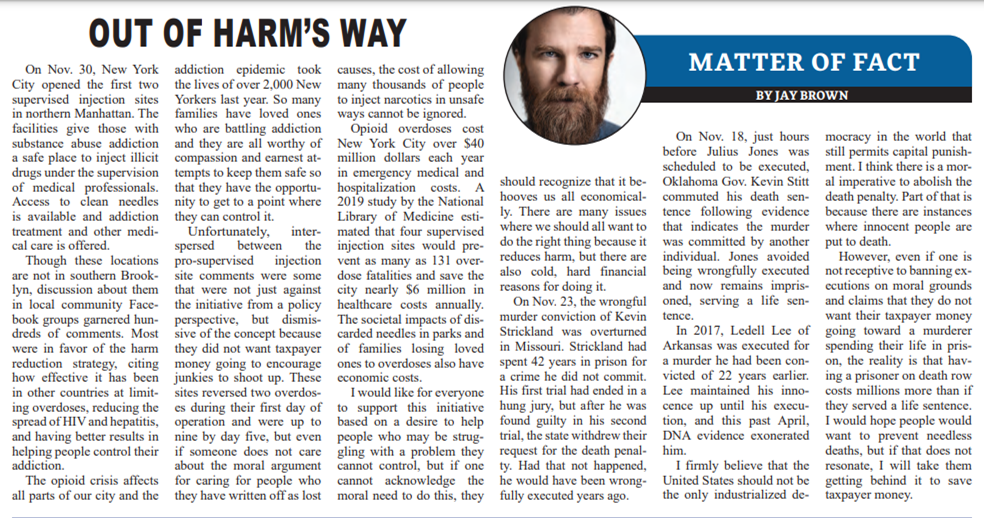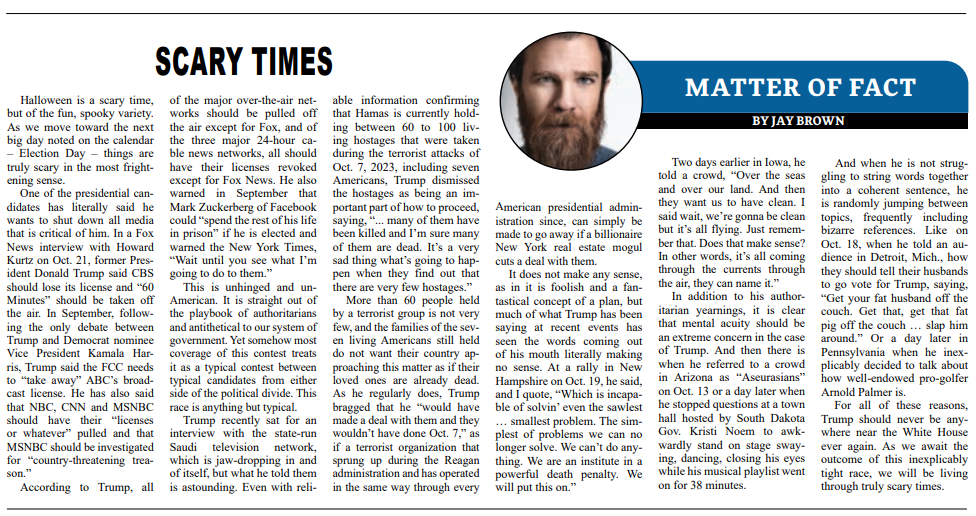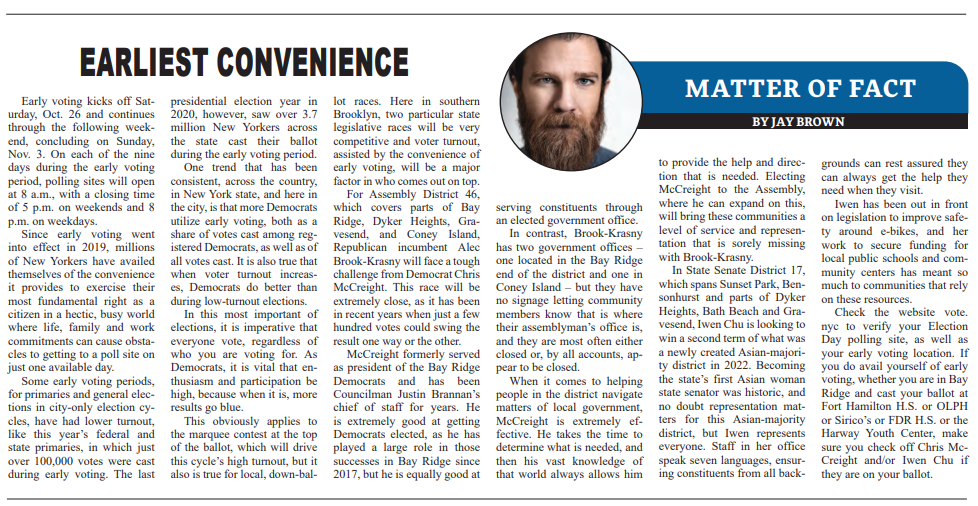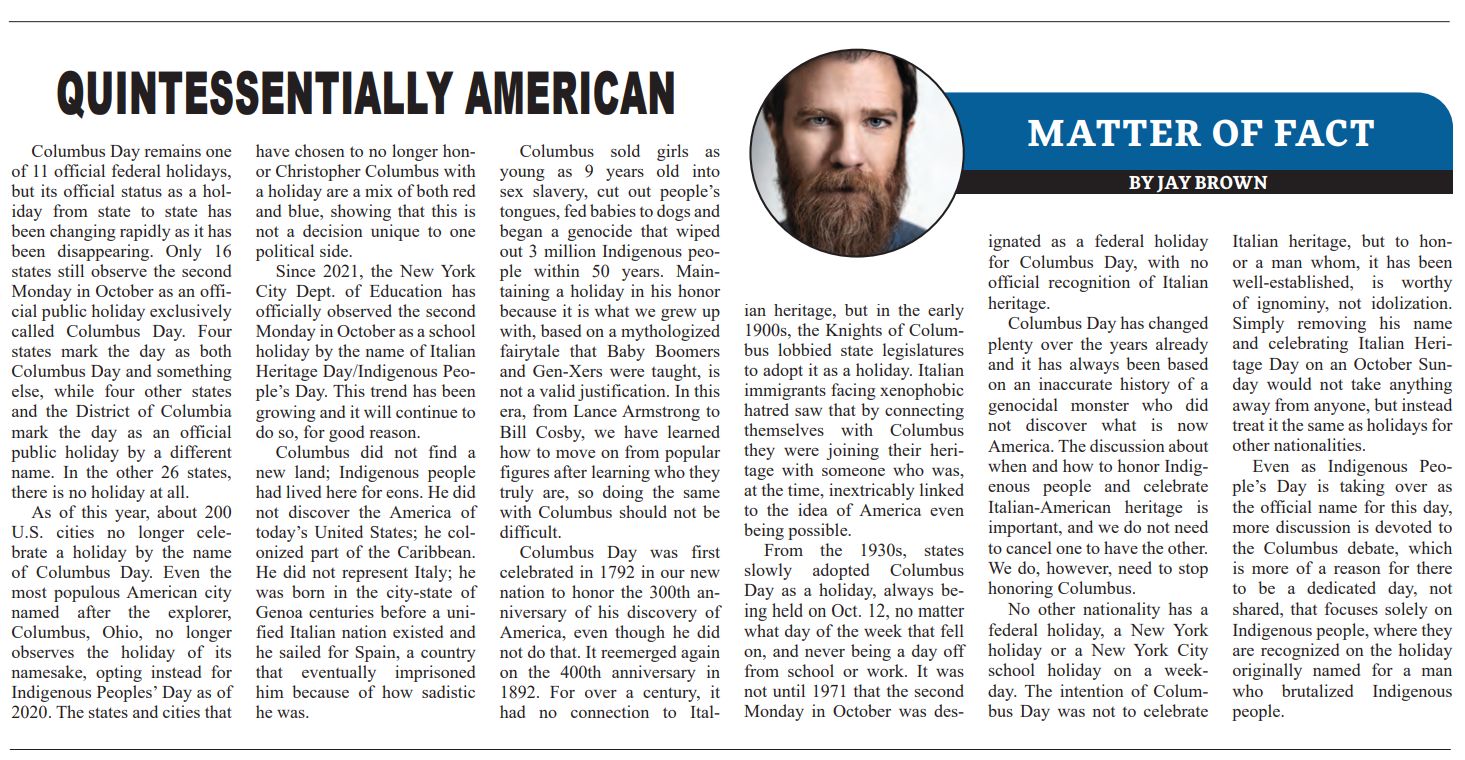This column, from the weekly opinion piece MATTER OF FACT, first appeared on BrooklynReporter.com, the Home Reporter and Spectator dated December 10, 2021
On November 30, New York City opened the first two supervised injection sites in Northern Manhattan. The facilities enable those with substance abuse addiction a safe place to inject illicit drugs under the supervision of medical professionals. Access to clean needles is available and addiction treatment and other medical care is offered.
Though these locations are not in Southern Brooklyn, discussion about them in local community Facebook groups garnered hundreds of comments. Most were in favor of the harm reduction strategy, citing how effective they have been in other countries at limiting overdoses, reducing the spread of HIV and hepatitis, and having better results in helping people control their addiction.
The opioid crisis affects all parts of our city and the addiction epidemic took the lives of over 2,000 New Yorkers last year. So many families have loved ones who are battling addiction and they are all worthy of compassion and earnest attempts to keep them safe so that they have the opportunity to to get to a point where they can control it.
Unfortunately, interspersed between the pro-supervised injection site comments, were some that were not just against the initiative from a policy perspective, but dismissive of the concept because they did not want “taxpayer money going to encourage junkies to shoot up.” These sites reversed two overdoses during their first day of operation and were up to nine by day five, but even if someone does not care about the moral argument for caring for people who they have written off as lost causes, the cost of allowing many thousands of people to inject narcotics in unsafe ways cannot be ignored.
“…four supervised injection sites would prevent as many as 131 overdose fatalities and save the city nearly $6 million dollars in healthcare costs annually.”
Opioid overdoses cost New York City over $40 million dollars each year in emergency medical and hospitalization costs. A 2019 study by the National Library of Medicine estimated that four supervised injection sites would prevent as many as 131 overdose fatalities and save the city nearly $6 million dollars in healthcare costs annually. The societal impacts of discarded needles in parks and of families losing loved ones to overdoses also have economic costs.
I would like for everyone to support this initiative based on a desire to help people who may be struggling with a problem they cannot control, but if one cannot acknowledge the moral need to do this, they should recognize that it behooves us all economically. There are many issues where we should all want to do the right thing because it reduces harm, but there are also cold, hard financial reasons for doing it.
On November 23, the wrongful murder conviction of Kevin Strickland was overturned in Missouri. Strickland had spent 42 years in prison for a crime he did not commit. His first trial had ended in a hung jury, but after he was found guilty in his second trial, the state withdrew their request for the death penalty. Had that not happened, he would have been wrongfully executed years ago.
On November 18, just hours before he was scheduled to be executed, Oklahoma Governor Kevin Stitt commuted the death sentence of Julius Jones, following evidence that indicates the murder was committed by another individual. Jones avoided being wrongfully executed and now remains imprisoned, serving a life sentence.
In 2017, Ledell Lee of Arkansas was executed for a murder he had been convicted of 22 years earlier. Lee maintained his innocence up until his execution and this past April, DNA evidence exonerated him.
I firmly believe that the United States should not be the only industrialized democracy in the world that still permits capital punishment. I think there is a moral imperative to abolish the death penalty. Part of that is because there are instances where innocent people are put to death.
However, even if one is not receptive to banning executions on moral grounds and claims that they do not want their taxpayer money going toward a murderer spending their life in prison, the reality is that having a prisoner on death row costs millions more than if they served a life sentence. I would hope people would want to prevent needless deaths, but if that does not resonate, I will take them getting behind it to save taxpayer money.




